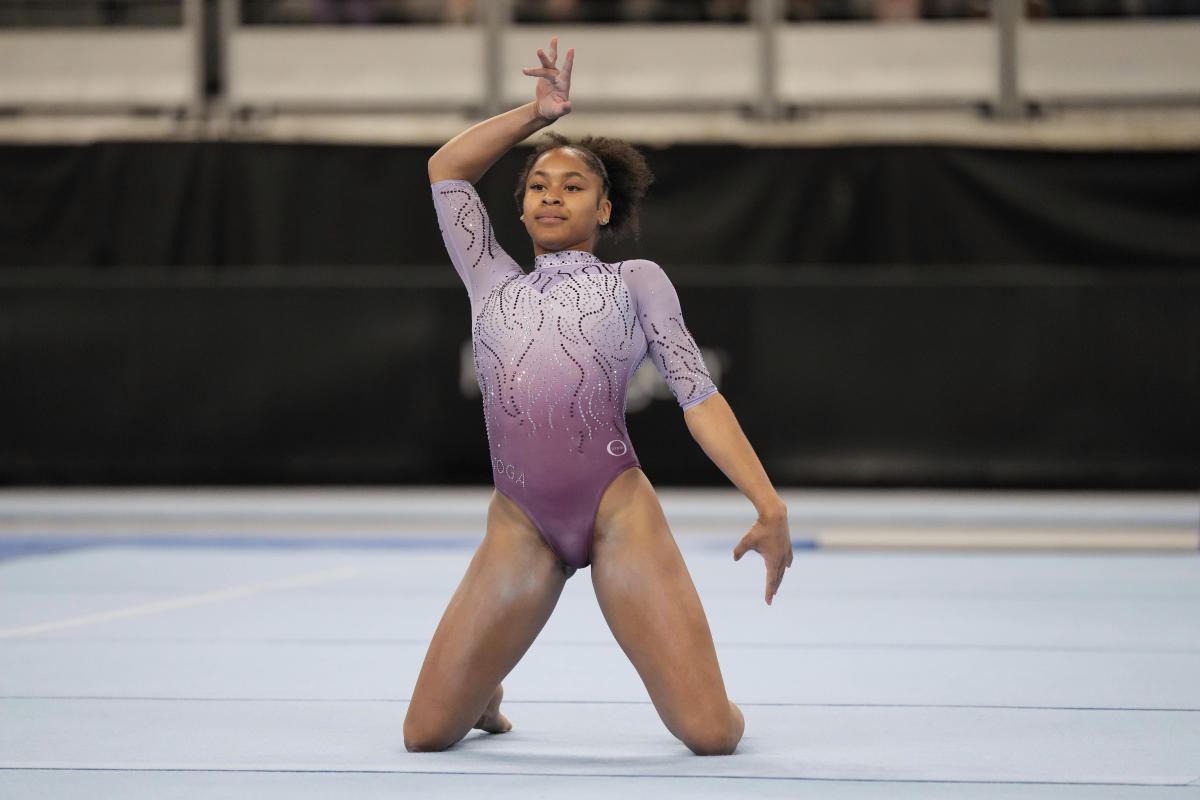Overview of Gymnastics Olympic Trials Injuries
Gymnastics olympic trials injury – The Gymnastics Olympic Trials are a highly competitive event that serves as the final qualifying stage for gymnasts to earn a spot on the United States Olympic team. These trials are physically demanding, and unfortunately, injuries are not uncommon.
The most common types of injuries sustained during the Gymnastics Olympic Trials include sprains, strains, and fractures. Sprains occur when ligaments are stretched or torn, while strains involve damage to muscles or tendons. Fractures are breaks in bones.
Frequency and Severity of Injuries
The frequency and severity of injuries at the Gymnastics Olympic Trials vary from year to year. However, data from previous trials indicates that sprains are the most common type of injury, followed by strains and fractures.
The gymnastics Olympic trials were marred by injury, but the trials also produced some impressive results. For a comprehensive look at the olympic trials results , click on the link provided. Despite the injuries, the trials showcased the talent and determination of the athletes competing for a spot on the Olympic team.
The severity of injuries can also vary greatly. Some injuries may only require a few days of rest, while others may require surgery and months of rehabilitation.
While the gymnastic olympic trials are underway, several athletes have unfortunately suffered injuries. The trials are an important event for gymnasts, as they determine who will represent their country at the Olympic Games. The injuries sustained during the trials can be a major setback for the athletes, as they may prevent them from competing at their full potential.
It is important for the athletes to recover quickly and get back to training so that they can be ready for the Olympics.
Causes and Risk Factors for Gymnastics Olympic Trials Injuries
Gymnastics is a physically demanding sport that requires athletes to perform complex and high-impact maneuvers. As a result, gymnasts are at risk for a variety of injuries, including sprains, strains, fractures, and dislocations. These injuries can be caused by a number of factors, including:
Biomechanical Factors
The biomechanics of gymnastics involve the way that the body moves and generates force. Certain biomechanical factors can increase the risk of injury, such as:
- Poor body alignment
- Muscle imbalances
- Joint laxity
- Repetitive movements
Training and Preparation Methods
The way that gymnasts train and prepare for competition can also increase the risk of injury. For example, training too hard or too often can lead to overuse injuries. Improper technique can also put stress on the body and increase the risk of injury.
Nutrition and Recovery
Nutrition and recovery are essential for gymnasts to stay healthy and injury-free. A healthy diet provides the body with the nutrients it needs to repair and rebuild tissues. Adequate rest and recovery time allows the body to recover from training and competition.
Prevention and Management of Gymnastics Olympic Trials Injuries: Gymnastics Olympic Trials Injury

Preventing and managing injuries are crucial aspects of ensuring gymnasts’ safety and optimal performance. A multifaceted approach involving injury prevention strategies, medical intervention, and successful programs can effectively minimize the risk and impact of injuries during the Gymnastics Olympic Trials.
Injury Prevention Strategies
Gymnasts should prioritize injury prevention measures to reduce the likelihood of sustaining injuries. These strategies include:
- Warming up and cooling down: Adequate warm-up and cool-down exercises prepare the body for demanding activities and enhance flexibility, reducing the risk of strains and sprains.
- Proper technique: Gymnasts should master proper technique under the guidance of qualified coaches. Correct form minimizes excessive stress on joints and muscles, preventing injuries.
- Progressive training: Gradually increasing the intensity and complexity of training over time allows the body to adapt and strengthen, reducing the risk of overuse injuries.
- Strength and conditioning: Regular strength and conditioning exercises improve overall physical fitness, enhancing muscle strength, flexibility, and balance, which contribute to injury prevention.
- Adequate nutrition and hydration: Maintaining a healthy diet and staying well-hydrated supports overall health, muscle recovery, and energy levels, reducing the risk of fatigue-related injuries.
Role of Medical Professionals
Medical professionals play a vital role in managing and treating gymnastics-related injuries. They provide:
- Diagnosis and assessment: Doctors and physical therapists accurately diagnose injuries, determine their severity, and develop appropriate treatment plans.
- Treatment and rehabilitation: Medical professionals provide treatment modalities such as physical therapy, massage therapy, and pain management to promote healing and restore function.
- Injury prevention advice: Doctors and physical therapists can provide personalized advice on injury prevention strategies based on individual risk factors and training regimens.
- Collaboration with coaches: Medical professionals work closely with coaches to ensure that rehabilitation and training programs are aligned and support the gymnast’s recovery and progress.
Successful Injury Prevention and Management Programs, Gymnastics olympic trials injury
Successful injury prevention and management programs in gymnastics have demonstrated positive outcomes. Examples include:
- USA Gymnastics’ Safe Sport Program: This program promotes athlete safety and well-being, emphasizing injury prevention education, reporting mechanisms, and support services.
- International Gymnastics Federation’s (FIG) Injury Prevention Committee: The committee focuses on research, education, and the development of injury prevention guidelines for gymnasts worldwide.
- University-based injury prevention programs: Universities with gymnastics programs often implement comprehensive injury prevention and management protocols, including regular screenings, injury surveillance, and individualized training plans.
By implementing these strategies and involving medical professionals, gymnasts can significantly reduce their risk of injuries, enhance their performance, and achieve their Olympic dreams safely and effectively.
